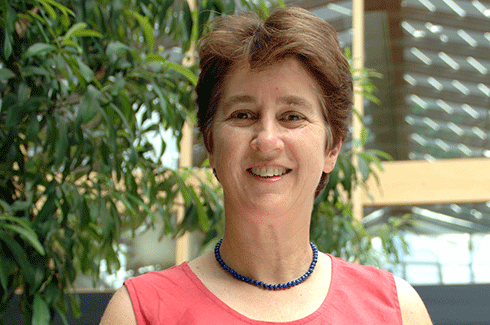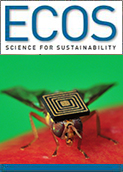
|
Published: 4 March 2014
Helen Cleugh: Making a statement about climate
While Australia’s latest ‘State of the Climate’ report paints a gloomy picture of increased warming, rising greenhouse gas concentrations and more extreme weather, Dr Helen Cleugh – Deputy Chief Research (Climate and Atmosphere) of CSIRO Marine and Atmospheric Research – says climate science is a rewarding profession to be in because it can make a difference.

|
|
Dr Helen Cleugh: ‘Knowing where to put our investment and where we can do some good planning will mean we can adapt reasonably well...in an increasingly variable climate.’ Credit:
Carl Davies
|
What is the State of the Climate report, and why is it important for Australia?
Every two years, the Bureau of Meteorology and CSIRO join forces to provide a short and succinct statement about what the Australian climate is doing and how it’s changing.
While there might be international statements from the Intergovernmental Panel on Climate Change (IPCC), World Meteorological Organization or agencies in the US, none of those focus on this part of the globe, so it’s important for CSIRO and the Bureau of Meteorology, as the national agencies, to provide that information.
How does the latest State of the Climate report fit with previous State of the Climate findings? Are there any new trends?
The 2014 State of the Climate strengthens the information and data provided in the 2012 and 2010 reports, and shows a continuation of the warming trend that we see both in the air and the oceans.
It shows that our greenhouse gas concentrations are continuing to rise. The increase in atmospheric concentrations of greenhouse gases from 2011 to now is one of the largest increases that we’ve seen.
We’ve also focused on some new areas such as heat waves and fire weather, because we felt that there was a high level of interest in the community. In fact, last year was a standout as being the hottest on record for Australia. We’ve also included some new information on heavy rainfall and tropical cyclones.
How does this latest data influence projections for climate change and sea level rise in Australia?
Obviously our future climate depends to some degree on greenhouse gas emissions over the next 20-50 years. Certainly, there is a continued warming trend because we’re committed to some warming by virtue of past emissions and the inertia of the climate system. In the longer term we will continue to warm but how much depends on our ability to reduce emissions of greenhouse gases.
With respect to sea-level rise, because oceans are where a great bulk of the additional heat accumulates, this causes oceans to warm and expand. This means that the globe is committed to rising sea levels as well.
What area of climate science do you work in and what was your role with the State of the Climate report?
My area of expertise is how the land surface interacts with the climate, particularly focusing on how much carbon dioxide various ecosystems take up. Of all the emissions humanity is putting out, more than half are taken up by the biosphere – that’s both in the oceans and on the land.
My primary role on the report is as a senior leader in CSIRO and the Deputy Chief of CSIRO Marine and Atmospheric Research – I manage the teams who have undertaken much of the climate science in CSIRO, so I have a responsibility to make sure that that science is explained accurately and correctly.
What’s exciting in climate science right now?
CSIRO, the Bureau of Meteorology, and Australia’s universities have been putting a lot of effort into ensuring that Australia has a good capability for weather and climate modelling and simulation.
We’ve been building a model called ACCESS which is both a weather prediction model and a climate model, and we’re pretty excited as to the capability that ACCESS offers in terms of looking at future climate scenarios.
Because we’ve developed it here in Australia, it does as good as job as we can of representing factors that are important for Australia such as the El Niño-Southern Oscillation-type phenomena, as well as representing Australian ecosystems and the oceanic systems that are around Australia.
We’ve also developed much better capability to not only measure carbon dioxide in the atmosphere but also to assess what the carbon budget is for various ecosystems. Lastly, we are developing improved methods for providing climate information at finer scales – where people need information for planning and adaptation.
What are some of the future directions for research in climate and atmosphere?
I think research into which systems do have adaptive capacity, which ones don't, and which ones are more vulnerable is an important development. Knowing where to put our investment and good planning will enable communities to adapt reasonably well and minimise the negative consequences of change in an increasingly variable climate.
Also, with a lot of the planning for the future, people want to know about shorter, seasonal time frames – three months, six months out – and that’s where climate prediction capability is the hardest to do well so we’re investing in improving our capability in those time scales.
Integration is also a bit of a buzz word but it’s vital that we start bringing together the different strands of science. To understand what climate change is going to do and what it’s going to mean for us in the future means bringing together atmospheric science, an understanding of what plants do, what the oceans do and what people do and what economic systems do. A challenge for us is to bring together those different domains of science into one framework for better informed decision making.
What advice would you give to aspiring students or young scientists wishing to work in this research area?
Firstly, it is an area where you can have an impact and make a difference. It’s fulfilling even though it’s challenging. The other advice I’d give is make sure you’ve got a good grounding in some of the more quantitative sciences such as maths and science and computing. Those are all key skills. It’s also really important to be good at communication.
It’s a field to get into if you’d like to help make a difference, and at least to know that you’re providing the community with the information that it needs to make important choices and decisions about the future.



